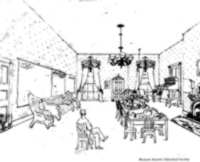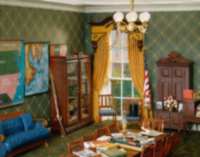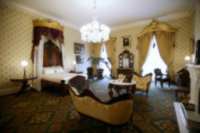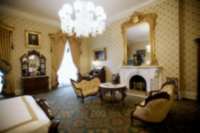Two Journeys
In 1861, President-elect Lincoln wanted to bid farewell to his stepmother before leaving for Washington. She lived 90 miles from Springfield. The round-trip there and back took three days, by passenger train, freight train, and finally horse-drawn buggy down the dirt roads of Illinois. Mere days later, he started on his 1904-mile journey by rail to Washington. His route, chosen with an eye toward toward politics, took him from Springfield, Illinois through Indianapolis to Cincinnati to Columbus, Pittsburgh, Cleveland, Buffalo, Albany, New York City, Philadelphia and Harrisburg before his adventures in Baltimore and his arrival in Washington. There were stops for receptions, speeches, and ceremonies at nearly every city, but, even so, that tremendous journey, by rail, took a mere 12 days and could have been done in 2 or 3 days -- less time than it took for him to travel to see his step-mother in the same state. The President-elect knew firsthand how the new differed from the old.
The Capitol Dome
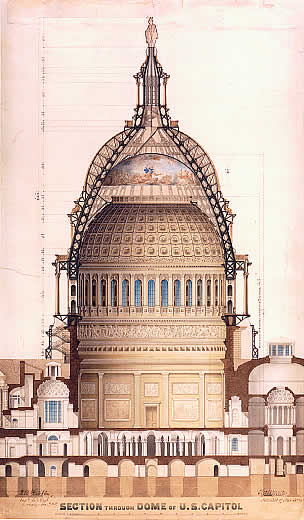 |
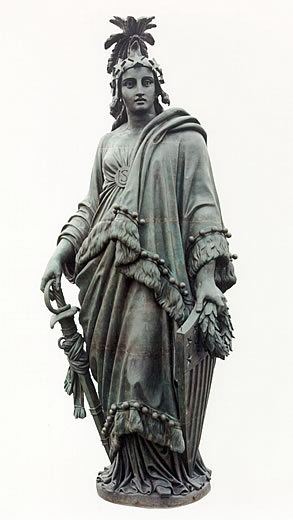 |
|
|
(Upper Left: an 1859 cross-section of the dome as then planned. Upper Right, the final version of the statue of Freedom) A partially completed Capitol dome was the backdrop to President Lincoln's inauguration in 1861. A wooden version of the dome had been removed in 1856. A temporary roof was installed over the Rotunda to protect it during the construction project. Today's cast-iron Capitol dome was hauled into place, piece by piece, by a steam-powered boom and derrick in 1863. The steam engines powering the crane were fueled by the old dome's wood. The statue of Freedom, which tops the dome was originally designed wearing a "liberty cap," a symbolic head covering dating to ancient Greece and worn in the French Revolution. While Jefferson Davis was Secretary of War under President Buchanan, he objected to the design showing a cap, which he saw as a symbol of a freed slave. He got his way. By the time the statue was hauled atop the completed dome in December 1863, it had a Roman helmet -- and Davis was president of the Confederacy. |
||
|
|
